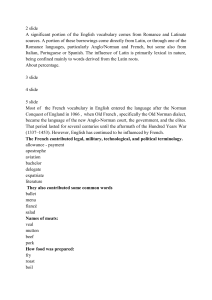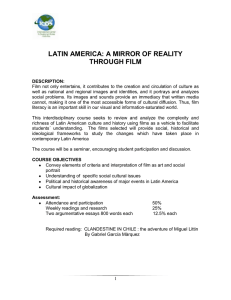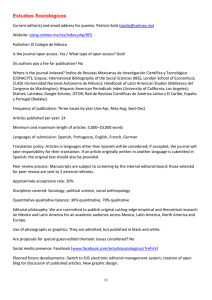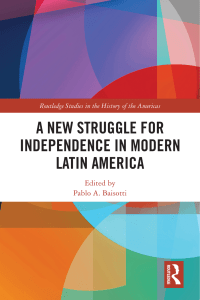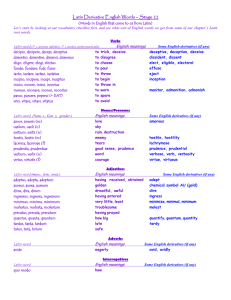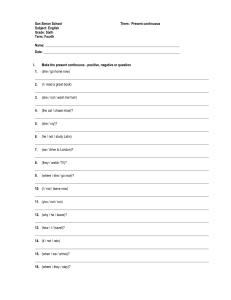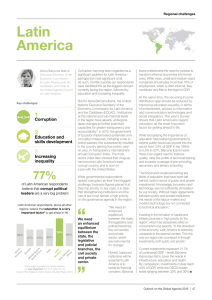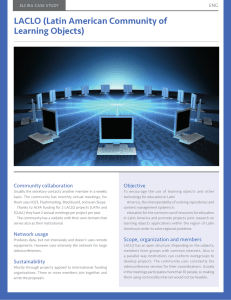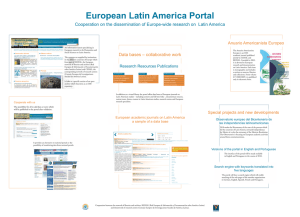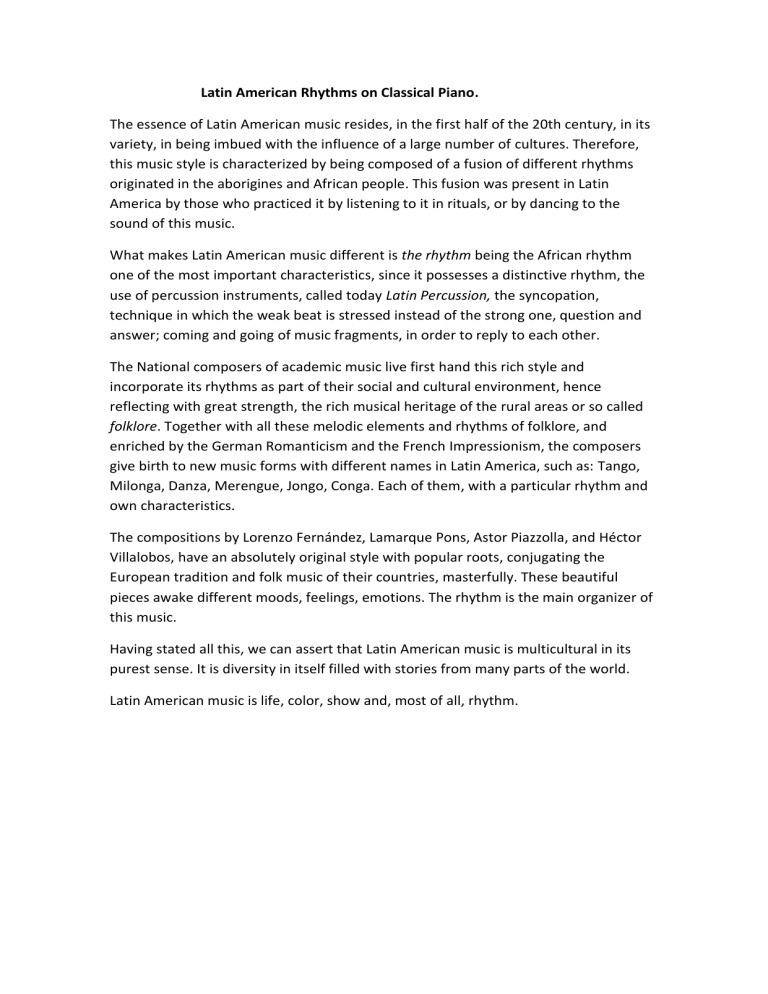
Latin American Rhythms on Classical Piano. The essence of Latin American music resides, in the first half of the 20th century, in its variety, in being imbued with the influence of a large number of cultures. Therefore, this music style is characterized by being composed of a fusion of different rhythms originated in the aborigines and African people. This fusion was present in Latin America by those who practiced it by listening to it in rituals, or by dancing to the sound of this music. What makes Latin American music different is the rhythm being the African rhythm one of the most important characteristics, since it possesses a distinctive rhythm, the use of percussion instruments, called today Latin Percussion, the syncopation, technique in which the weak beat is stressed instead of the strong one, question and answer; coming and going of music fragments, in order to reply to each other. The National composers of academic music live first hand this rich style and incorporate its rhythms as part of their social and cultural environment, hence reflecting with great strength, the rich musical heritage of the rural areas or so called folklore. Together with all these melodic elements and rhythms of folklore, and enriched by the German Romanticism and the French Impressionism, the composers give birth to new music forms with different names in Latin America, such as: Tango, Milonga, Danza, Merengue, Jongo, Conga. Each of them, with a particular rhythm and own characteristics. The compositions by Lorenzo Fernández, Lamarque Pons, Astor Piazzolla, and Héctor Villalobos, have an absolutely original style with popular roots, conjugating the European tradition and folk music of their countries, masterfully. These beautiful pieces awake different moods, feelings, emotions. The rhythm is the main organizer of this music. Having stated all this, we can assert that Latin American music is multicultural in its purest sense. It is diversity in itself filled with stories from many parts of the world. Latin American music is life, color, show and, most of all, rhythm.
